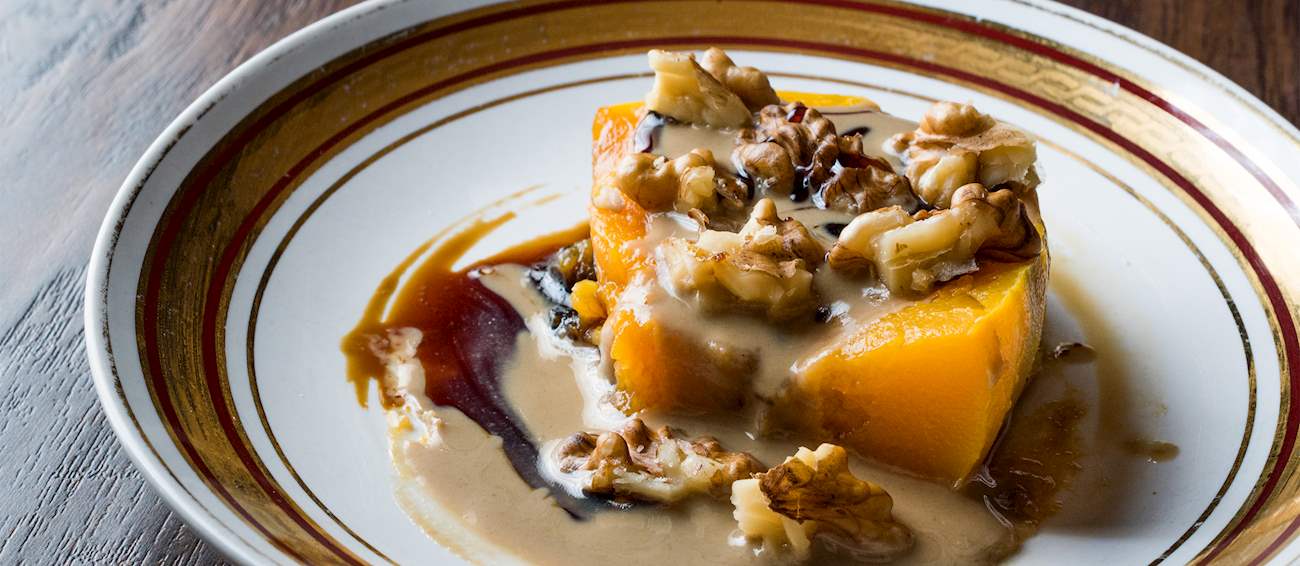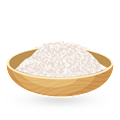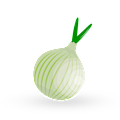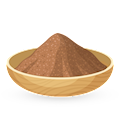İç pilav is a flavorful Turkish pilaf made with a combination of rice (often of the Baldo variety), onions, currants, tomatoes, mint, and pine nuts. It is typically flavored with allspice, cinnamon, salt, and pepper. The ingredients are combined, and when the rice is cooked, the pilaf is ready to be stirred for one last time, then consumed. İç pilav is traditionally used as an accompaniment to roasted or fried meat dishes, but it is sometimes also used as a stuffing.
MAIN INGREDIENTS
Kabak tatlısı is a classic Turkish dessert consisting of candied pumpkin. The pumpkin is peeled, cut, then baked in its own juices with sugar. When baked, it is traditionally topped with crushed walnuts and thick clotted cream called kaymak. If desired, a few cinnamon sticks or cloves can be added to the pumpkin pieces before baking.
This dessert is especially popular during autumn and winter.
MAIN INGREDIENTS
Kokoreç is a traditional dish that's also popular in other countries, especially in Greece, where it's known as kokoretsi. However, there are some differences between the Turkish and Greek versions. In Greek cuisine, people use lamb offal such as lungs, kidneys, hearts, and liver, and in Türkiye, they use small and large intestine and sweetbreads without any additional ingredients.
For the Turkish version, kokoreç, the ingredients are rinsed and cleaned, then wrapped onto iron skewers to be grilled over charcoal. Once done, the dish is usually served with bread or tucked inside the bread with various spices such as oregano, cumin, and chili flakes.
MAIN INGREDIENTS
One of the staples of traditional Turkish cuisine, sarma consists of a filling that is snugly surrounded by leaves or leafy vegetables. There are numerous versions of this dish but the mixture typically combines ingredients such as minced meat, rice or bulgur, various herbs, seasonings, red pepper, paprika, ground sumac, or tomato sauce, while the typical wrapping usually includes vine, cabbage, or sauerkraut leaves, or a variety of leafy vegetables such as collard greens and swiss chard.
Having its roots in the Ottoman Empire, sarma is also traditionally consumed in the Balkans, the countries of Central Europe, the South Caucasus, and the Middle East. Although it is commonly enjoyed as a filling lunch or dinner (typically during the winter season), sarma is often prepared on special occasions and holidays.
Menemen is a traditional spread consisting of tomatoes, eggs, peppers, and various spices. There are many version of menemen, so it can also contain garlic, cheese, spinach, sausage pieces, or onions (when menemen is served as a main dish). It is usually sold at breakfast or brunch places in Turkey, and most restaurants serve it in metal pans, with a big basket filled with bread as an accompaniment.
Most people don’t use forks, as they opt for bread as the utensil of choice, scooping up this flavorful spread in the process.
MAIN INGREDIENTS
İşkembe çorbası is a traditional tripe soup that is known as a great hangover cure. It consists of tripe, water, milk, flour, butter, and egg yolks. The soup is usually seasoned with salt and finished with red pepper, vinegar, and garlic, giving it a bold flavor.
It is recommended to serve the soup while still hot.
MAIN INGREDIENTS
Piyaz is a traditional salad. In most of the country, it's a general term for a dish of dried beans, parsley, onions, and sumac. In Antalya, however, piyaz also contains a rich and smooth sauce consisting of tahini, lemon juice, and vinegar. The beans are topped with the sauce, and the dish is usually dressed with chopped tomatoes, sliced onions, hard-boiled eggs, olive oil, and parsley.
Piyaz is often eaten as an accompaniment to köfte and similar grilled meats, but it can also be included in a meze selection.
MAIN INGREDIENTS
Cağ kebabı is a kebab variety originating from the Turkish city of Erzurum. It is made with lamb that is marinated with onions, salt, and pepper for about 12 hours, and the meat is then placed on a big horizontal skewer and cooked over a wood fire.
The usta (master of his trade) will take a long skewer and slice off tender and succulent pieces of lamb until the skewer is full. The dish is traditionally consumed either straight from the skewer, or with the meat wrapped in warm, freshly baked lavash flatbread.












